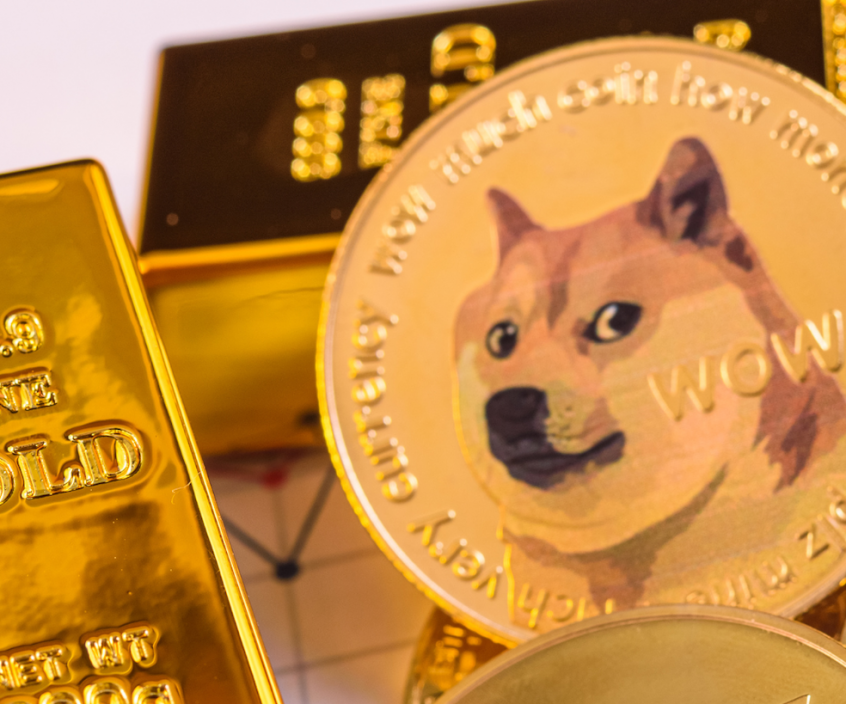If you’re interested in cryptocurrency, you’ve probably heard the term “altcoins.”
Originally, altcoins referred to anything other than Bitcoin. However, in some cases, some investors and cryptocurrency enthusiasts consider Ethereum a major coin and one of the “blue chips” of cryptocurrency.
Let’s take a look at altcoins.
What are Altcoins?
Altcoins are cryptocurrencies that aren’t Bitcoin (BTC) or, according to some people, Ethereum (ETH). Other cryptocurrencies are “alternatives” to the leading crypto coins. This is where the name altcoin comes from.
Some altcoins are also significant cryptocurrencies, with high market caps and a lot of trading. For example, according to CoinMarketCap, Cardano (ADA) and Solana (SOL) are both in the top 10 for market cap as of this writing.
These are cryptocurrencies with use cases similar to Ethereum and might be considered contenders in smart contracts and decentralized finance (DeFi).
Other major altcoins include Polkadot (DOT) on Polygon (MATIC). These altcoins are available on major cryptocurrency exchanges and have a purpose in the blockchain ecosystem. For example, polygon works on top of Ethereum as a Layer 2 solution to scaling. Polkadot’s purpose is to make blockchains interoperable.
What about Other Altcoins?
In addition to major altcoins, there are other altcoins. Some coins have a stated purpose, even if they aren’t available on major exchanges.
You might have to go to a decentralized exchange to access some alternatives. For example, you can’t buy tokens like Helium (HNT) on Coinbase, so you might have to try different ways of accessing them.
Buying some of these altcoins requires that you first have another cryptocurrency. Then, you use those coins to exchange for the altcoin of your choice. Therefore, transactions of this type often require at least an intermediate knowledge of cryptocurrencies and exchanges since you will need a crypto wallet to proceed.
Memecoins
One class of altcoin is what’s known as a memecoin. Memecoins don’t have a compelling use case. Additionally, they are often only popular through the hype and a short-lived interest.
Dogecoin (DOGE) and Shiba Inu (SHIB) are good examples of memecoins. Even though DOGE has lost almost all of its value in the last 14 months, it’s still a coin with a huge market cap and is one of the most popular coins.
However, many people lost money in the cycle of pump and dump that went on with the craze surrounding DOGE.
With some lesser-known and less popular altcoins, there’s a use case and the potential to provide future value. Memecoins are popular for a short time and see skyrocketing prices. Often, celebrities and others pump them up to foster interest. However, after a few weeks or months, the price crashes. Celebrities sell their coins near high prices, leaving others holding the bag.
What about Stablecoins?
Some enthusiasts don’t place stablecoins in the same category as they would altcoins.
A stablecoin is a type of cryptocurrency linked to another asset. The idea behind a stablecoin is that its value remains relatively stable because reserves back it.
For example, U.S. Dollar Coin (USDC) and Tether (USDT) are both supposed to be backed by U.S. dollar fiat currency reserves. On the other hand, PAX Gold (PAXG) is a stablecoin backed by gold reserves. Supposedly, a Brink’s vault holds the gold backing PAXG.
In many cases, trading pairs on currency exchanges use stablecoins. For example, if you use an exchange like KuCoin, you won’t be able to use U.S. dollar fiat currency. Instead, you’d need to have USDC or USDT. So, first, you transfer those coins from your wallet to the exchange. Then, you trade your stablecoin for another cryptocurrency.
While these transactions focus on stablecoins, it’s also often possible to use Bitcoin as a significant exchange coin. However, many crypto enthusiasts would rather keep their BTC as a store of value. They hold it in the hopes that it will appreciate in value. So, using stablecoins in exchange transactions makes more sense to some traders.
Bottom Line
The divisions among types of cryptocurrency have changed over time. In the beginning, there were Bitcoin and altcoins. Now there are different types of cryptocurrency divisions. For example, some might say that everything other than Bitcoin is still an altcoin. So they lump memecoins and stablecoins into the altcoin space.
However, no matter how you see different types of cryptocurrencies, it’s essential to understand that not every coin is a good investment. “blue chips” like Bitcoin and Ethereum are perceived to have good value.
Then, the rest of the cryptocurrency world has various coins of differing utility and potential value.

